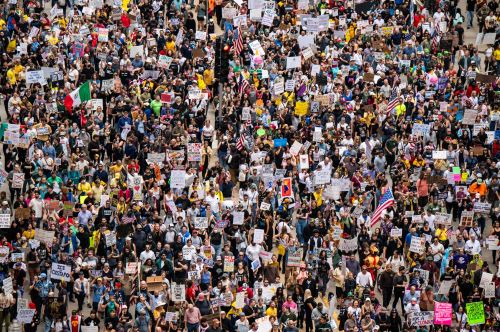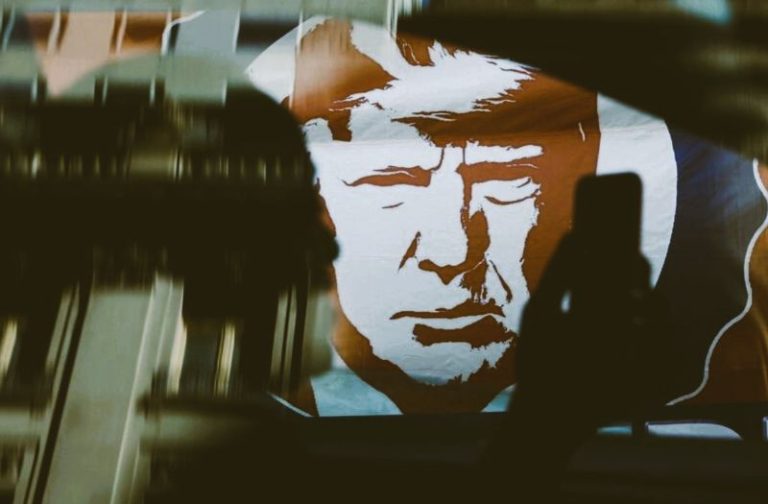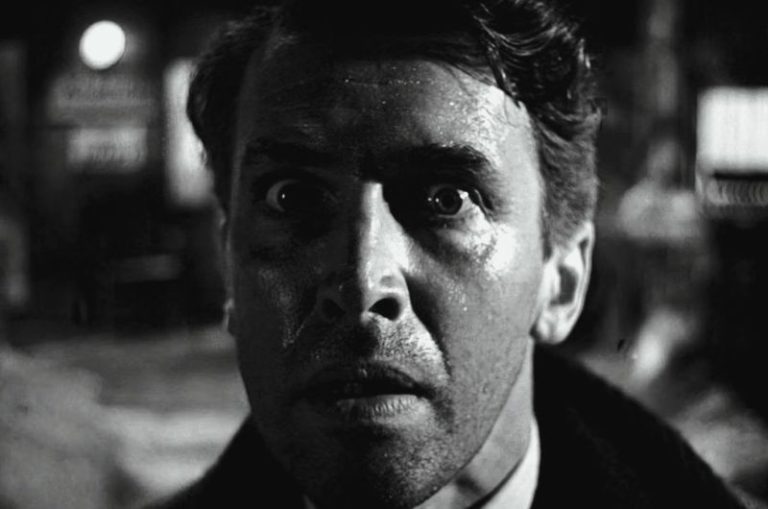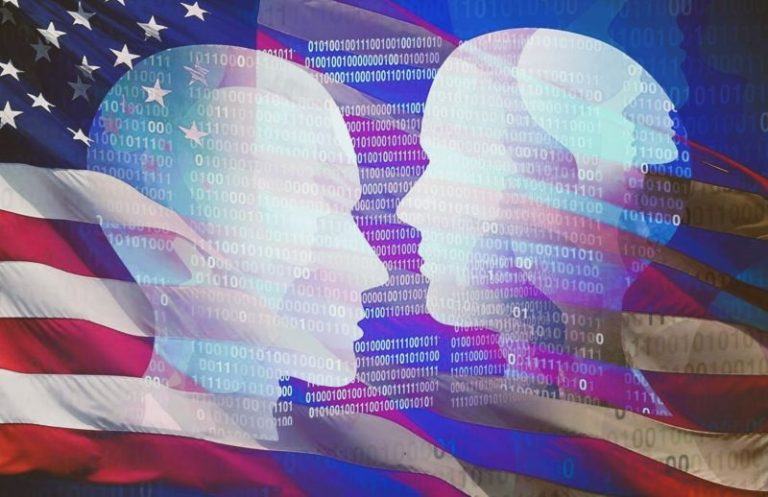

Politically, the administration faces a choice: confrontation or conversation. Thus far, President Trump has opted for the former, doubling down on rhetoric that dismisses protesters as “anti-American mobs.”

By Matthew A. McIntosh
Public Historian
Brewminate
Introduction
Across the United States, from bustling city centers to small-town squares, millions of Americans gathered peacefully on Saturday, October 18, 2025, under the banner of the “No Kings” movement, a swelling, nationwide protest against what demonstrators called President Donald Trump’s authoritarian ambitions and the creeping normalization of state repression. The marches, rallies, and vigils unfolded in all 50 states, drawing larger crowds than the movement’s inaugural day of action in June and signaling that public resistance to Trump’s policies is not waning, but deepening.
In cities like Washington, D.C., New York, Chicago, and Los Angeles, streets filled with homemade placards declaring “We Serve No King,” “Democracy Over Decree,” and “No One Above the Law.” Demonstrations remained overwhelmingly peaceful, with only a handful of minor arrests, none related to violence. In Austin, Texas, Governor Greg Abbott called out the National Guard preemptively, though even local officials later acknowledged the deployment was unnecessary, as crowds marched calmly through the city.
What began months ago as a show of dissent has evolved into one of the largest protest movements in recent American history, a rebuke to the concentration of executive power and to the rhetoric that casts dissenters as enemies of the state. As the chants of “No Kings” echoed through public squares, the message carried the weight of the republic’s founding ideal: that no leader, however powerful, stands above the people or the law.
Contrary to the many horrific warnings issued by Republicans that “antifa” and “terrorists” would reign violence on the streets during the protest, violence was absent. Law enforcement across the country reported peaceful protests by citizens exercising their First Amendment rights. Arrests were few and the vast majority of those were MAGA honkers harassing and attacking the peaceful protestors.
Backdrop and Context
The “No Kings” movement first captured national attention on June 14, 2025, when millions took to the streets in what organizers described as a mass reaffirmation of republican values, a stand against autocracy under the slogan drawn from the American Revolution itself. That first day of action, timed to coincide with the president’s public celebration of his birthday, marked the symbolic rejection of monarchical power in a nation born in revolt against kings. The demonstrations were organized by a coalition of civil-liberties groups, veterans, and grassroots networks alarmed by what they saw as Trump’s growing disregard for constitutional limits.
By October, the movement had matured into a coordinated network spanning states, campuses, and community organizations. Its demands have broadened: curbing the expansion of executive authority, ending Immigration and Customs Enforcement (ICE) raids seen as politically motivated, and restoring the independence of the judiciary. Protesters and organizers alike framed the campaign not as an act of partisan resistance but as a defense of democracy itself.
The choice of “No Kings” as a rallying cry is deeply intentional, a reminder that America’s founding vision rejected inherited power in favor of public consent. In interviews, participants emphasized that this protest is not simply about Trump as an individual, but about preserving the constitutional guardrails that protect citizens from the rule of one. The second day of nationwide demonstrations, held on October 18, sought to show that June’s turnout was not an anomaly but the beginning of a sustained civic awakening.
From student marches in Boston to interfaith gatherings in Phoenix, the breadth of participation underscored how diverse the coalition has become. Even rural and traditionally conservative counties saw peaceful marches, suggesting that unease over unchecked executive power is crossing familiar political lines.
The sheer scale of organization (more than 2,700 registered events nationwide) speaks to the movement’s endurance. What began as a symbolic act of defiance has now evolved into a test of civic resolve in a country still reckoning with how much power it is willing to place in a single man’s hands.
Scope and Scale of the October 18 Demonstrations
From sunrise marches on the East Coast to candlelit vigils in the Pacific Northwest, the “No Kings” protests of October 18 stretched across time zones and demographics, uniting millions under a shared purpose. Crowds packed the National Mall in Washington, D.C., filled Times Square in New York, and poured through downtown Los Angeles, where aerial footage showed a sea of placards shimmering under afternoon sunlight. As The Guardian reported, the scale surpassed even the record-breaking turnout of the June demonstrations, making this one of the largest coordinated protest movements in recent U.S. history.
In San Francisco, an estimated 50,000 gathered at Civic Center Plaza, waving American flags repurposed with the slogan “No Kings” emblazoned across the stripes, an image captured by the San Francisco Chronicle as emblematic of the movement’s blend of patriotism and protest. In Chicago, trains were rerouted around the Loop as thousands marched past the Dirksen Federal Building. Even smaller cities, like Sioux Falls, South Dakota, saw remarkable participation: over 3,000 residents filled the streets in the largest demonstration in the city’s recent memory.
Despite the enormous crowds, the tone remained peaceful and purposeful. Incidents were minimal and arrests rare, a striking contrast to the heavy security presence in many states. In Texas, Governor Greg Abbott’s decision to activate the National Guard in Austin drew widespread criticism after the event passed without disruption. Even local law enforcement officials conceded that the deployment, which echoed Trump’s own calls for “toughness,” had been unnecessary.
From coast to coast, the protests resembled more a civic festival than an uprising, musicians playing folk songs from flatbed trucks, veterans carrying signs invoking their oath to the Constitution, and families with children holding paper crowns crossed out in red. The atmosphere was one of solidarity rather than fury, and the absence of violence gave moral force to the movement’s message: that democracy’s strength lies in peaceful defiance, not chaos or fear.
As dusk fell and city lights reflected off streets still echoing with chants of “We Serve No King,” the day ended without the clashes many Republican commentators had predicted. What emerged instead was a portrait of a country awake, a citizenry asserting its right to resist the transformation of democracy into rule by decree.
Key Themes and Messaging
If the first “No Kings” demonstrations were a warning, the October 18 marches became an affirmation. Protesters’ handmade banners and chants framed the rallies as a defense of democracy, not a revolt against government. The gatherings mixed celebration with resolve: a street-party vibe threaded with a solemn insistence that executive power must remain answerable to law.
Placards denounced “rule by decree,” ICE raids, and new restrictions on press access. Speakers invoked the Bill of Rights and the Founders’ rejection of monarchy; veterans held signs reading “I swore an oath to the Constitution, not a man.” The mood was diverse (families, students, faith groups, and veterans side by side) but unified by an insistence that patriotism means accountability.
Republican officials sought to redefine the movement as anti-American. Conservative commentators labeled demonstrators “hate America” activists and even “terrorists,” rhetoric the protesters said mirrored the classic authoritarian tactic of branding dissenters as enemies of the state. Yet that framing failed to match the reality on the ground: peaceful crowds, flags aloft, police officers chatting with marchers.
The message that echoed through the day was simple but resonant: democracy’s legitimacy comes from restraint, not domination. By turning out in such numbers, the “No Kings” movement reminded the nation that the American experiment has always depended on citizens willing to say, peacefully but firmly, enough.
Political Response and Tensions
The official reactions to the October 18 protests revealed as much about the political moment as the demonstrations themselves. Within hours, the White House and leading Republican figures dismissed the “No Kings” movement as a partisan spectacle, framing it as the work of what one Trump campaign spokesperson called “radical left agitators who hate America.” The accusation, widely circulated on conservative media, was echoed by several House allies who described protesters as “terrorists,” language that critics warned was deliberately designed to delegitimize dissent and equate peaceful opposition with subversion.
Civil-liberties advocates and legal scholars quickly pushed back. The protests remained overwhelmingly nonviolent, with no evidence of the “security threat” cited by Trump’s supporters. The tactic of labeling protesters as enemies of the state, analysts observed, has deep authoritarian precedents, from Nixon’s “silent majority” rhetoric to twentieth-century regimes that used fear to justify repression.
In Texas, Governor Greg Abbott’s decision to deploy the National Guard in Austin became a lightning rod for controversy. His order, issued a day before the event, was justified as a “precautionary measure,” yet the peaceful outcome undermined his rationale. Even Austin’s police chief told reporters that the march “posed no serious threat.” Critics accused Abbott of political theater meant to mirror Trump’s law-and-order narrative and to cast citizens exercising their First Amendment rights as potential rioters.
Democratic lawmakers, civil-rights groups, and a number of veterans’ organizations praised the demonstrations as a legitimate and patriotic expression of civic concern. Representative Jamie Raskin called them “a constitutional act of public conscience,” and the American Civil Liberties Union released a statement commending the protesters for “reclaiming the civic space that belongs to the people.”
For Trump, the growing size of the movement presents a paradox. Publicly, he has mocked the protesters as “losers and anarchists,” but privately, advisers have said that the administration views the expanding turnout as a barometer of unease, evidence that his consolidation of executive power may be provoking a level of mass resistance unseen in modern history. Whether the White House chooses to suppress, ignore, or co-opt that energy may define the next phase of his presidency.
The political divide over “No Kings” now stretches beyond policy into the moral vocabulary of democracy itself. To its critics, the movement embodies disorder; to its participants, it restores order, the constitutional kind, grounded not in fear but in the sovereignty of the people.
Why This Is Significant
The October 18 “No Kings” demonstrations marked more than a single day of dissent, they signified the emergence of a sustained, citizen-driven defense of democratic principle. Analysts across major outlets described the nationwide scale as “historic in both coordination and conviction.” Never since the early Trump years have so many people mobilized simultaneously under a message centered on constitutional restraint rather than partisan loyalty.
At its core, the protest’s resonance lies in its invocation of America’s founding ethos. The chant “No Kings” directly echoes the revolutionary refusal to trade one tyrant abroad for another at home. By invoking that phrase, demonstrators aligned their message not with modern ideology but with the civic DNA of the republic itself, the belief that authority derives from consent, not command. The symbolic power of that reminder, carried through handmade signs and collective voice, transformed the protest from a moment of opposition into an act of historical continuity.
The timing also matters. These demonstrations came amid rising federal assertiveness: expanded ICE operations, efforts to weaken judicial independence, and the politicization of the military’s domestic role. In that context, millions of peaceful marchers offered a visible counterweight, proof that the public square remains the last, and perhaps most essential, check on overreach. The gatherings were not merely anti-Trump but pro-republican government in the truest sense of the term.
Politically, the protests complicate the narrative of a country resigned to authoritarian drift. The sight of veterans, clergy, students, and suburban families sharing space under a banner of lawful dissent challenges the administration’s portrayal of critics as fringe radicals. Sociologists compared the scale to the Women’s March and the civil-rights demonstrations of the 1960s, emphasizing how peaceful mass participation shifts public perception more effectively than confrontation.
Most of all, the movement’s endurance underscores a broader truth: that democracy depends not only on institutions but on the will of ordinary citizens to protect them. The “No Kings” coalition may not have legislative power, but it possesses something equally potent: visibility, moral clarity, and the ability to remind the nation what freedom sounds like when spoken in unison.
Voices from the Field
Across the country, the “No Kings” demonstrations became a chorus of personal testimony, stories stitched together by shared conviction. In Sioux Falls, organizer Kaitlyn Meyer told South Dakota Searchlight that the crowd’s size “shows a sense of commitment we haven’t felt before,” adding that many attendees had never joined a protest until this one. Her words echoed a theme heard repeatedly throughout the day: this movement isn’t led by professional activists, but by ordinary citizens unwilling to remain silent.
In Washington, D.C., a retired Army officer held a sign that read, “I took an oath to defend the Constitution, not a man.” In Los Angeles, clergy members of multiple faiths led prayers calling for compassion and restraint in governance. In New York, a group of high-school students recited lines from the Declaration of Independence, “whenever any Form of Government becomes destructive of these ends…,” and the crowd finished the sentence with them. The Associated Press described the moment as “half teach-in, half revival,” a melding of civics lesson and collective reaffirmation.
Some protesters carried portraits of civil-rights leaders and suffragists; others brought children dressed as “tiny revolutionaries” wearing paper crowns crossed out with red paint. The diversity of age, race, and political background reflected a unifying belief that the problem transcends party. “I voted Republican for 30 years,” one marcher in Phoenix told reporters, “but this isn’t conservatism, it’s coronation.” Similar sentiments rippled through interviews nationwide, demonstrating how the “No Kings” banner has become a vessel for broader democratic anxieties.
Even in cities where turnout was smaller, the tone remained strikingly hopeful. Local musicians, poets, and veterans spoke from open-air stages; artists painted murals of empty thrones surrounded by hands raised in peace. As one protester said, “We’re not trying to tear anything down, we’re trying to keep the roof from collapsing.”
By evening, social media feeds filled with images of candles forming circles in town squares, creating a visual refrain to the day’s central message: that democracy is not a monument but a living covenant, renewed each time citizens gather to defend it.
Challenges and Risks
Even as the “No Kings” movement surged in size and visibility, its organizers confronted familiar dilemmas, how to sustain momentum without losing focus, and how to withstand an increasingly hostile political climate. Peaceful as the October 18 demonstrations were, the scale alone triggered heightened surveillance and warnings from federal and state officials, with the Department of Homeland Security issuing a vague bulletin about “potential disruptions.” None materialized. Still, civil-liberties groups cautioned that such alerts, absent evidence, risk normalizing suspicion toward dissent itself.
Another challenge lies in maintaining unity amid diversity. The coalition includes libertarians alarmed by state overreach, progressives advocating immigration reform, and centrists concerned about constitutional erosion. That ideological range gives the movement reach, but also tension. As one organizer in Philadelphia told Reuters, “Our strength is that we’re broad, our risk is that we fracture.” Leaders have responded by focusing messaging tightly on shared democratic principles: separation of powers, equal justice, and peaceful participation.
There is also the ever-present risk of distortion. Conservative media outlets quickly seized on isolated images (a single confrontation in Portland, a burned effigy in Los Angeles) to depict the movement as unruly. Yet local police reports and independent journalists confirmed that those incidents were minor and swiftly contained. The vast majority of protesters marched peacefully, often under self-imposed “no provocation” pledges circulated online.
Perhaps the most insidious threat, however, is rhetorical. When elected officials label millions of peaceful demonstrators “terrorists,” the line between lawful protest and criminality begins to blur, a dynamic historians recognize as a hallmark of authoritarian governance. Legal scholars warned that such framing can erode the legitimacy of dissent in the public mind, paving the way for new restrictions on assembly and speech.
For now, the “No Kings” movement has avoided the violence that autocratic systems often provoke to justify crackdowns. Its challenge going forward will be to keep that moral high ground: to remain disciplined, visible, and relentlessly lawful even as those in power attempt to provoke or discredit it. As one veteran marcher in Chicago put it, “Our greatest act of resistance is calm.”
Looking Ahead
As dawn broke the morning after the “No Kings” protests, cleanup crews swept city squares still scattered with candles, flags, and hand-painted signs, reminders of a civic awakening that felt less like an ending than a beginning. Organizers across the country told Reuters and The Guardian that follow-up meetings were already scheduled, with local committees forming to channel the energy of October 18 into structured civic action. Some plan to focus on voter registration drives and legal-aid clinics for immigrants; others aim to pressure state legislatures to safeguard checks and balances from federal intrusion.
The movement’s decentralized nature, a loose confederation rather than a hierarchy, could prove both its strength and its test. Without a single charismatic leader, “No Kings” avoids easy decapitation by political opponents. But its future depends on whether this spontaneous network can transform outrage into organization, turning chants into policy advocacy. Scholars of social movements note that the transition from protest to program is where most civic uprisings falter. To survive, “No Kings” will need to institutionalize itself just enough to endure while remaining nimble enough to reflect the public mood.
Politically, the administration faces a choice: confrontation or conversation. Thus far, President Trump has opted for the former, doubling down on rhetoric that dismisses protesters as “anti-American mobs.” Yet polling after the June demonstrations suggested that many independents sympathize with the protesters’ message even if they dislike the label. If that trend continues, the White House may find that vilifying millions of peaceful citizens risks alienating the moderate base it needs.
The protests also carry implications for the broader republican experiment, whether the public still believes that power, once seized, can be checked without violence. The October 18 turnout demonstrated that civic mobilization still holds currency in an age of polarization. As one constitutional scholar told PBS NewsHour, “When people fill the streets not to overthrow a system but to remind it of its limits, that’s democracy remembering itself.”
What comes next, then, will measure not only the endurance of a movement but the resilience of the nation it seeks to defend. The slogan that thundered through city streets, No Kings, now hangs in the political air like both a promise and a warning: that the American people have not forgotten who holds the crown in a republic, and that they are prepared to reclaim it if necessary.
Originally published by Brewminate, 10.21.2025, under the terms of a Creative Commons Attribution-NonCommercial-NoDerivatives 4.0 International license.


